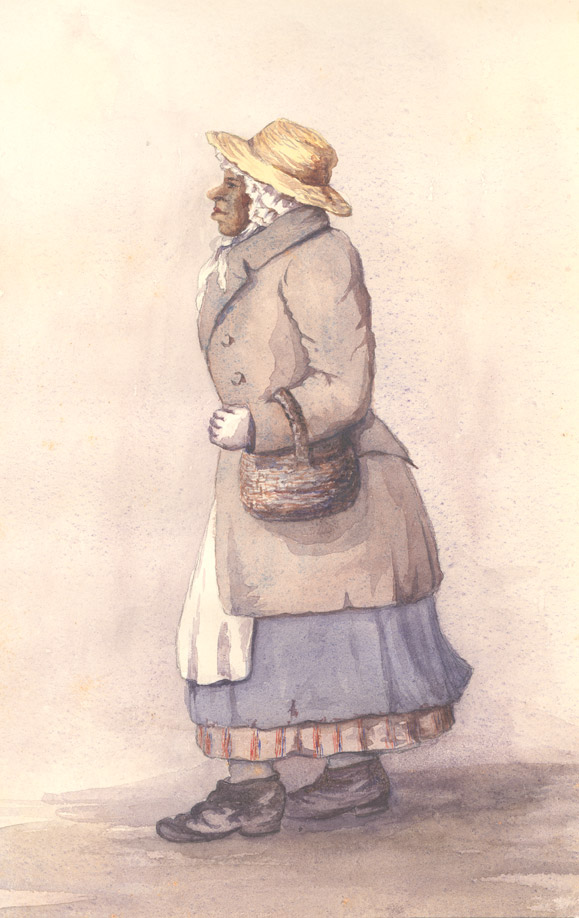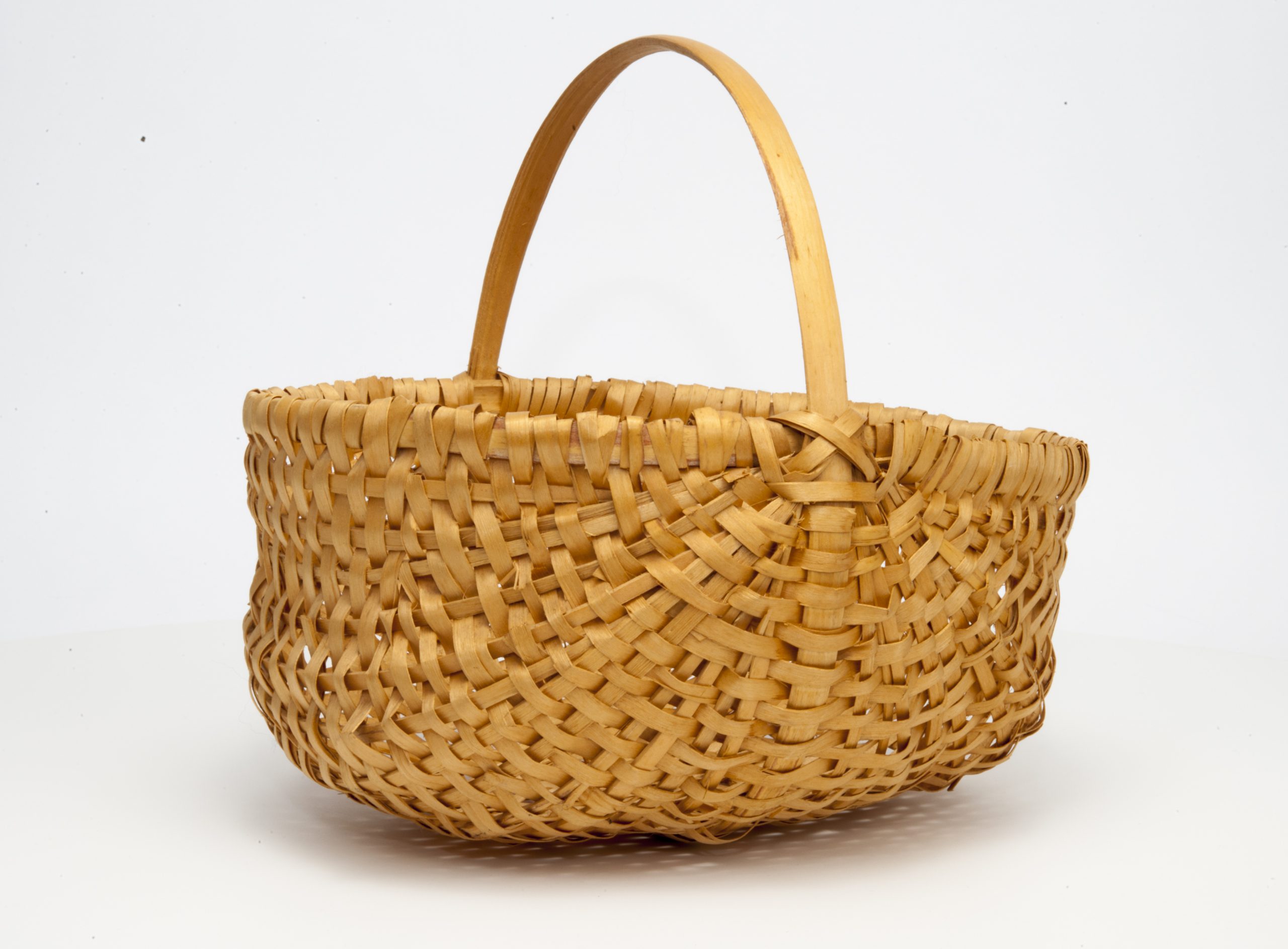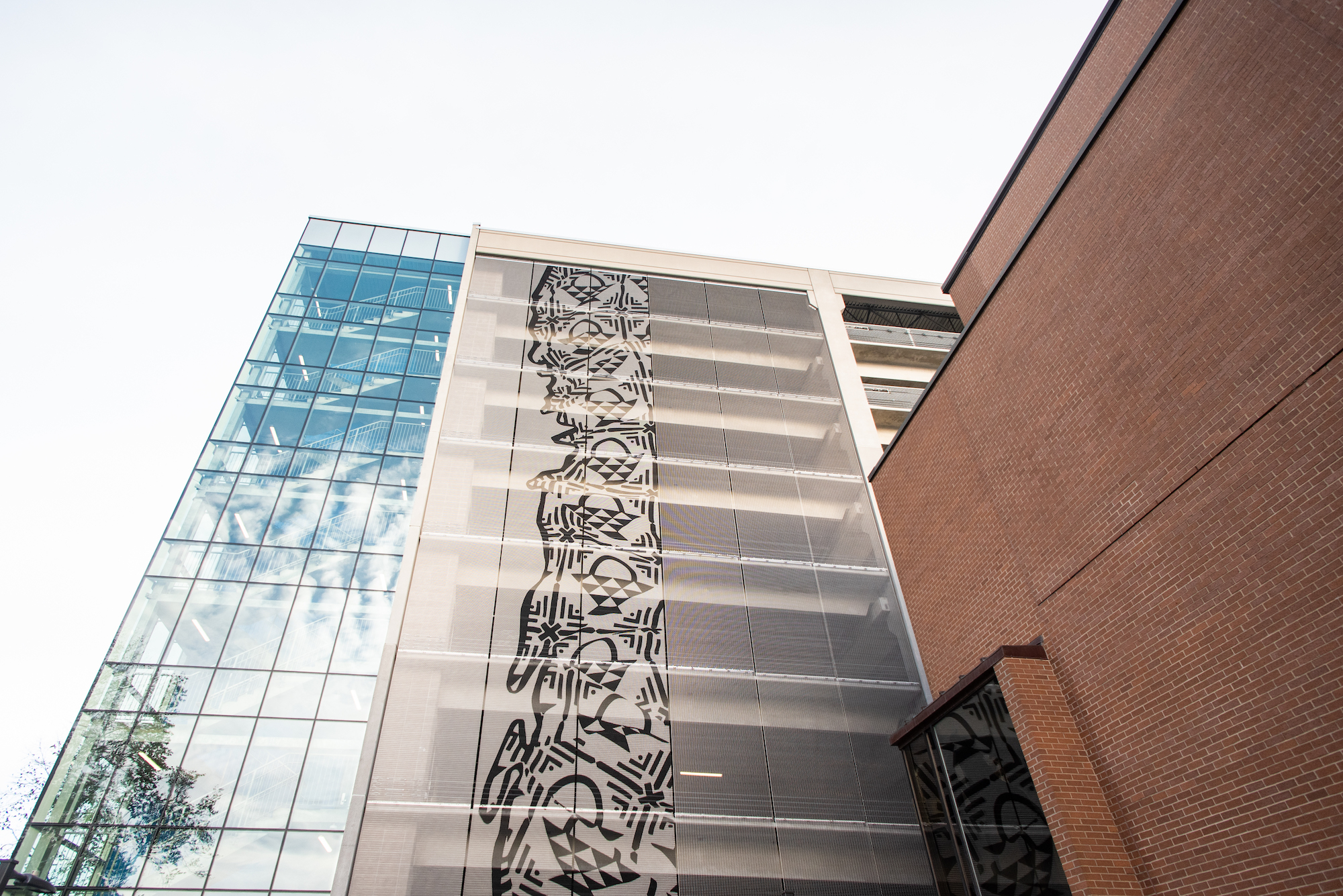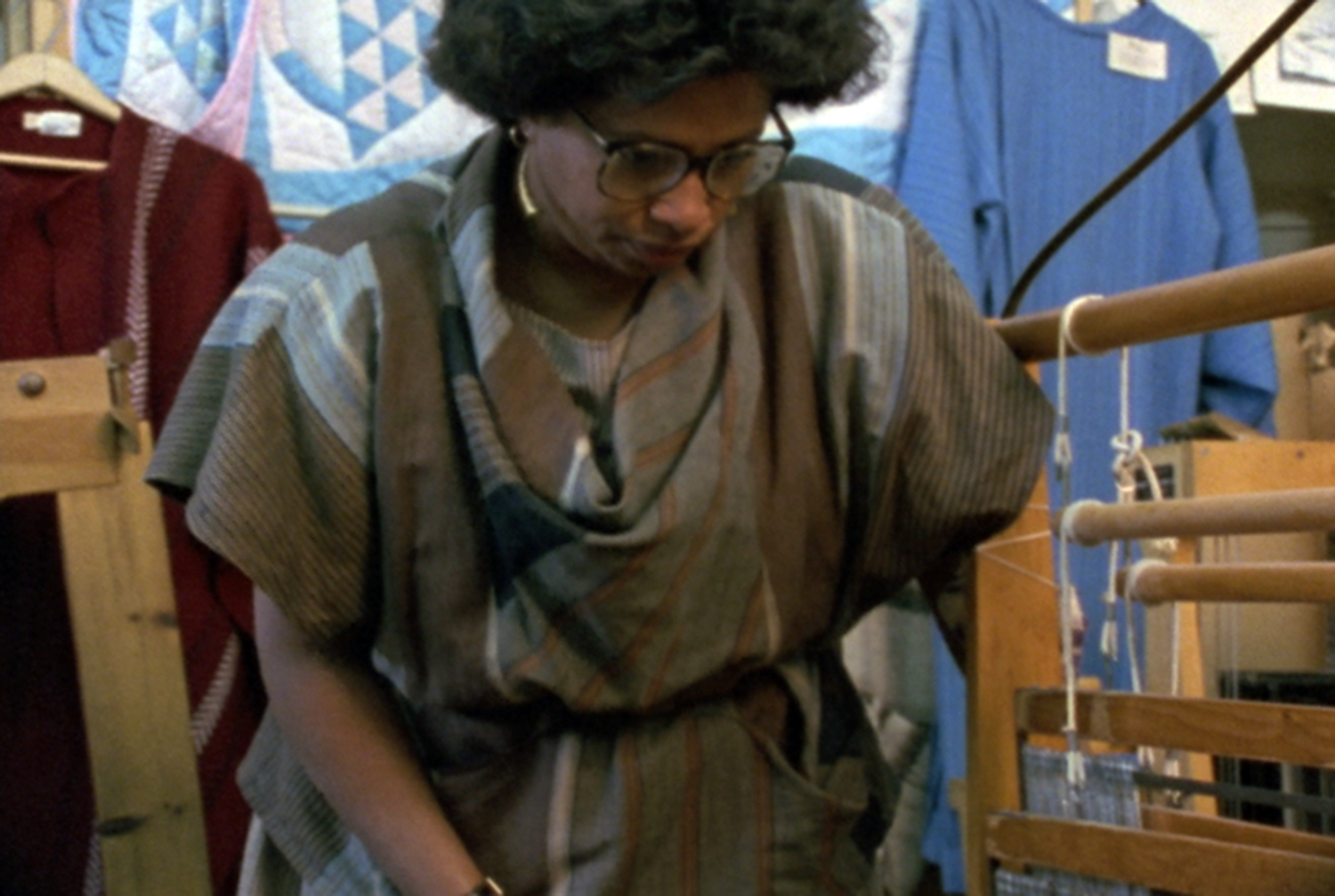QUILTING
Daurene Lewis and her ancestor Rose Fortune were leaders in their communities. Their relationship to textile arts are tied to their unique history.Above: Antique blue and white Cherry Basket Quilt. Image use courtesy of Cindy’s Antique Quilts.
Daurene Lewis (1943-2013) was a weaver and became the mayor of Annapolis Royal in 1984; she was the first female Black mayor in Canada. She was a community leader, serving in numerous of formal and volunteer capacities. In 2002, she was made a member of the Order of Canada.
Ms. Daurene was a descendant of Rose Fortune, a child of Black Loyalists who arrived with their family to Nova Scotia in 1783. Ms. Rose became the first female police officer in North America enforcing curfew in her town and an entrepreneur owning a porter business.
Ms. Daurene Lewis, with blue and white cherry basket quilt in the background.
Film still from Black Mother Black Daughter (1989), Sylvia D. Hamilton and Claire Prieto. National Film Board. Used with permission.
Andrea came across the stories of Ms. Daurene and Ms. Rose through a 1989 documentary Black Mother Black Daughter by Sylvia D. Hamilton and Claire Prieto. In the film, we see Ms. Daurene and her mother at the weaving loom, discussing their connection to their ancestor Rose Fortune. As Andrea’s main artistic medium is quilting and the craft also being an important part of African Nova Scotian culture, her eye is immediately drawn to the quilt that hangs in the background behind the two women. It features a traditional cherry basket quilt block, which is the main inspiration behind Andrea’s design representing quilting.

In Conversation, Quilting, Andrea Tsang Jackson
SECONDARY PATTERN: BASKET
The only known portrait of Rose Fortune is a small watercolour. In the image, we see Ms. Rose holding a basket on her arm. Baskets have long been an important element in both African and Indigenous communities across North America, and specifically African Nova Scotian and Mi’kmaw communities.
In the 1800s and onward, baskets were made in African Nova Scotian communities of Cherry Brook, East and North Preston, Lucasville and Hammonds Plains. The Black Mother Black Daughter documentary also features basket-making as a social activity, one of knowledge being passed from generation to generation. At the centre of this tradition is Edith Clayton (1920-1989), a famous basket maker from Cherry Brook, who exhibited at Expo 87 in Vancouver and was awarded the Queen’s Silver Jubilee Medal in 1977.

Watercolour of Rose Fortune © Nova Scotia Archives Documentary Art Collection. Image used with permission.
Much research has been done on basket making traditions at the Nova Scotia Museum by Joleen Gordon. In her research, she notes the unique construction of African Nova Scotian baskets — a design that would start with the handle and rim being bound together with an X and then the ribs of the basket container would be anchored here. From this feature, Andrea designed a secondary pattern with an X in between the cherry basket quilt blocks.

Market Basket made by Edith Clayton. Object #: 2001.5, Nova Scotia Museum. Image used with permission.

In Conversation, Quilt design with “X” as a secondary element, Andrea Tsang Jackson.
The family of Daurene Lewis granted Andrea permission to tell their story in this way.
RESOURCES
Black Mother Black Daughter. Directed by Sylvia D. Hamilton & Claire Prieto, National Film Board, 1989.
“Rose Fortune.” The Canadian Encyclopedia. March 14, 2015.
Gordon, Joleen. Baskets of Black Nova Scotians. 2013. Nova Scotia Museum.
ABOUT THE ARTIST
Andrea Tsang Jackson is a Canadian-born visual artist of Chinese descent based in Kjipuktuk / Halifax, Nova Scotia. Her work takes the traditional craft medium of quilting and applies it to a contemporary context.
ACKNOWLEDGEMENTS
This project is possible with the participation of many people who offered their time, knowledge, and collaboration.


